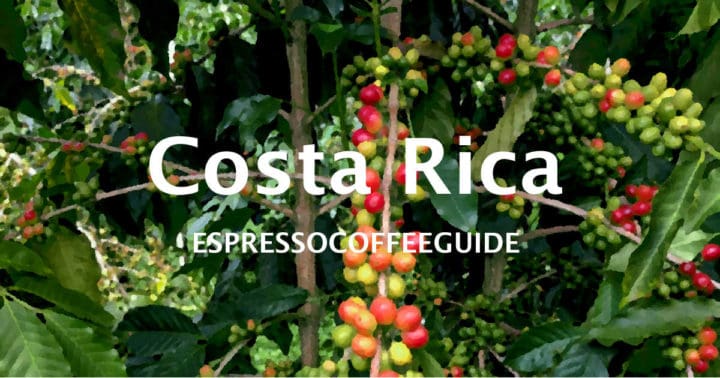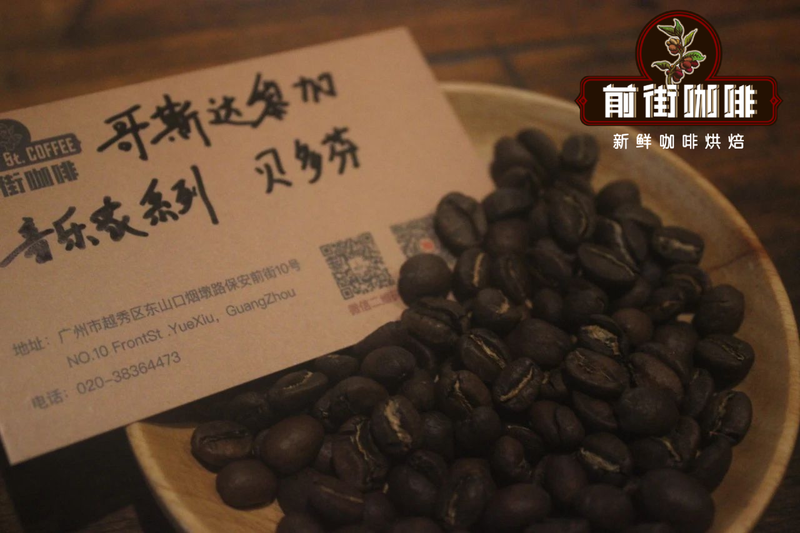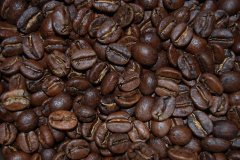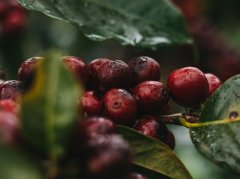Costa Rican Coffee fact Carnett Manor musicians Beethoven Coffee Bean Flavor description
Coffee is Costa Rica's main cash crop.
Coffee production has played a key role in Costa Rica's history and continues to play an important role in the country's economy. Coffee was Costa Rica's third largest export in 2006, having been its largest cash crop export for decades.
Costa Rica was the first Central American country to have a coffee industry.
All coffee originates in Ethiopia, the birthplace of Arabica coffee. Through trade in the 1700s, coffee began to enter Europe and then the rest of the world. In the case of Costa Rican coffee, a naval officer obtained seedlings from King Louis XIV of France's coffee tree in 1723. Amazingly, this single seedling sailed to America and has since become the breeding ground for every coffee tree in Central America.
Costa Rica has more than 80,000 smallholder coffee producers.
The country produces about 56.438 ounces of coffee per hectare, the highest yield in the world.
The coffee grading system includes the following classifications;SHG, GHB and MHB.
In Costa Rica, green beans are graded primarily by altitude, which affects the hardness of the beans. Higher elevations produce harder coffee beans, which are considered more popular. The Costa Rican grading system uses the following classifications: Strictly High Growth ( SHG ), High Quality Hard Beans ( GHB ), and Medium Hard Beans ( MHB). Strictly High Grown coffee beans are grown at altitudes above 1,200 meters. Good hard beans grow between 1,000 and 1,200 meters above sea level. Finally, medium hard beans grow between 500 and 900 meters above sea level. 95% of the harvest produced in Tarrazu is classified as Strictly Hard Bean of the highest quality.
Coffee is certified bird-friendly. There are trees and nests on the farm.

Costa Rica's coffee beans are at the forefront
Costa Rican coffee has some of the best flavors throughout Central America due to its higher altitude. One of the main reasons Costa Rica maintains high quality standards for coffee beans is because it is illegal to produce Robusta beans here. The reason is that costa rica's soil conditions are so excellent--volcanic soils rich in minerals--that the coffee association of costa rica refuses to plant robusta beans that do not restore minerals to the soil through rotation in order to protect the soil.
In such an excellent environment, Costa Rica is excellent and coffee beans are endless. Today, the front street will introduce you to Beethoven, a series of explosive musicians.

About this coffee is from Costa Rica's Tarasu region of the Canet estate, the estate owner after the most classic classical composer named coffee beans. Beethoven is a yellow carduroy variety, yellow carduroy is a single-gene variety of bourbon, discovered in Brazil in 1937, yield and disease resistance are better than bourbon, and the tree is shorter and easier to harvest. Dense area, the manor owner to love passion fruit-based, coffee beans are more intelligent, so coffee beans have been well cultivated and attention, and only pick mature red cherry cherry group. On the day of harvest, the strawberry coffee cherries float and dry on African beds for at least three days, then after finding the best time, remove the skin of the cherries, retain the mucus, and then dry the cherries.
The drying process must be slow to ensure that every surface of the coffee cherries is fermented, but not too slow, otherwise the coffee may be overfermented. During the drying process, cherries must be turned quickly to ensure uniform fermentation.
The brew is full of the sweetness and acidity of coffee, from berry to citrus flavors, and full of fat, but clean. This unique treatment at the farm came with famous musicians such as Mozart, Bach and Beethoven. after
This treatment of coffee beans has a distinct floral aroma. Delicate washing method White fragrance complements fresh bergamot and caramel sweetness.
Sweet and colorful variety of fruits, strawberries, apples, cranberries, lemons to show the taste of a variety, honey toffee taste unforgettable.
Front Street recommends that you use the standard three-step probe when brewing this drink!
Important Notice :
前街咖啡 FrontStreet Coffee has moved to new addredd:
FrontStreet Coffee Address: 315,Donghua East Road,GuangZhou
Tel:020 38364473
- Prev

Costa Rican Coffee experience Plantation Tour Costa Rica has four advantages in growing coffee beans
Want to know why coffee lovers and lovers from all over the world go to Costa Rica to enjoy delicious food? Well, because he is one of the best coffee in the world, here are four reasons: tropical high-altitude high-quality Arabica coffee beans Costa Rican coffee experience tropical climate more than 70% of Costa Rican coffee plantations are located in the mountains of the country; as we all know, Goss
- Next

The story of Costa Rican bourbon coffee and how the six major coffee varieties Kaddura coffee beans taste good.
Typical varieties of Costa Rican coffee production: iron pickup, Kaddura, Kaduai, Villa Sarchi, bourbon and Rosa. The main varieties of coffee from Costa Rica in Qianjie are Kaddura and Kaduai. Today we will focus on the story that Costa Rica is the best variety of coffee in the world and how to brew these kinds of coffee! A height
Related
- Detailed explanation of Jadeite planting Land in Panamanian Jadeite Manor introduction to the grading system of Jadeite competitive bidding, Red bid, Green bid and Rose Summer
- Story of Coffee planting in Brenka region of Costa Rica Stonehenge Manor anaerobic heavy honey treatment of flavor mouth
- What's on the barrel of Blue Mountain Coffee beans?
- Can American coffee also pull flowers? How to use hot American style to pull out a good-looking pattern?
- Can you make a cold extract with coffee beans? What is the right proportion for cold-extracted coffee formula?
- Indonesian PWN Gold Mandrine Coffee Origin Features Flavor How to Chong? Mandolin coffee is American.
- A brief introduction to the flavor characteristics of Brazilian yellow bourbon coffee beans
- What is the effect of different water quality on the flavor of cold-extracted coffee? What kind of water is best for brewing coffee?
- Why do you think of Rose Summer whenever you mention Panamanian coffee?
- Introduction to the characteristics of authentic blue mountain coffee bean producing areas? What is the CIB Coffee Authority in Jamaica?

